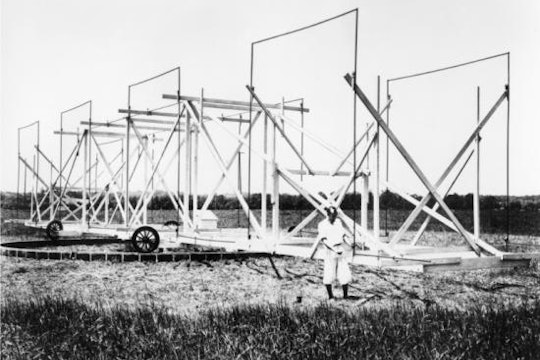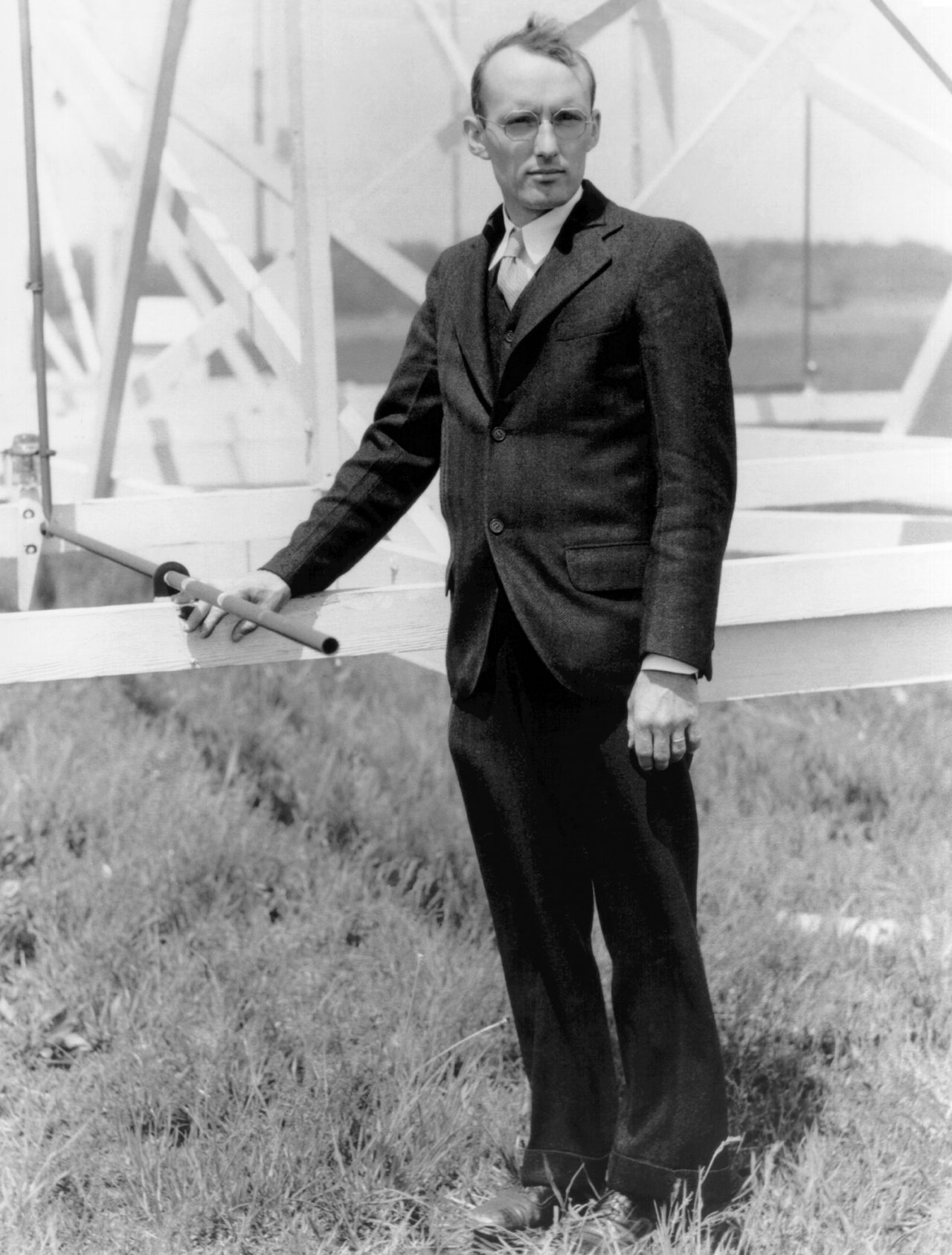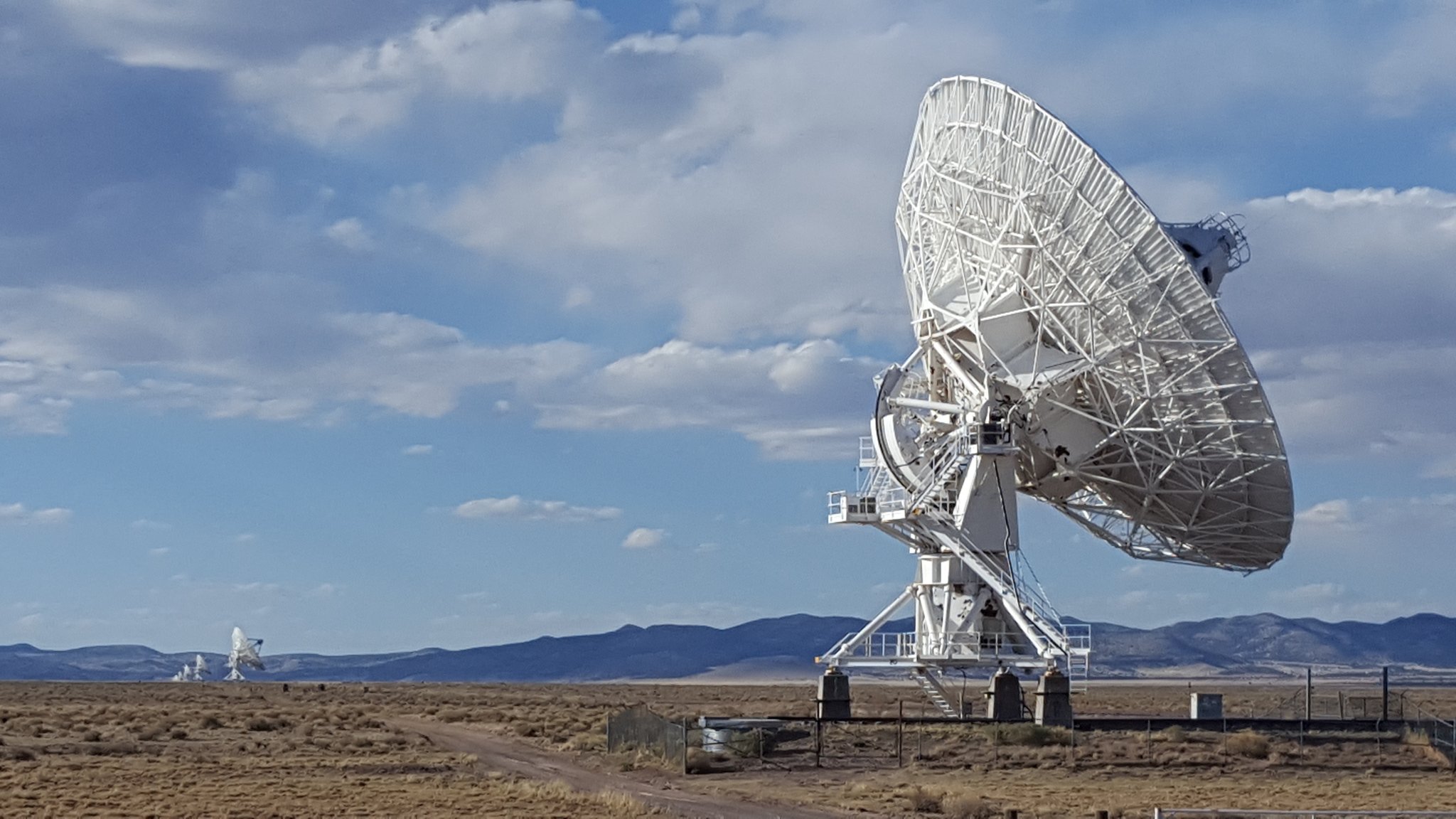
NRAO/AUI/NSF
How a scientist in a potato field founded the field of radio astronomy
Karl Guthe Jansky, hired to quiet hiss on long-distance phone calls, found radio waves coming from Sagittarius
The first transatlantic phone call was made in 1927, more than two decades before ships laid the first cables connecting North America and Europe. Unlike domestic telephone operations at the time, which connected people by electrical cable, early transatlantic telecommunications were carried by radio waves. Static frequently interfered with these long-distance phone calls. It was this static that led a young radio engineer named Karl Guthe Jansky on a chase that ended with the advent of a new era of astronomy.
The same year of that first radio phone call connecting the US and the UK, Jansky graduated from the University of Wisconsin, where he studied physics. Bell Telephone Laboratories, a telecommunications company based in New Jersey, wanted to research atmospheric properties and their effect on long-distance radio telephone calls. They hired Jansky as a radio engineer the following year to figure out where static in their transatlantic radio telecommunications was coming from.
During his few years at Bell Labs, Jansky turned an abandoned potato farm into an experimental station to hunt down the source of radio frequency interference. As part of the experiment, he constructed a special antenna more than twice as long as a city bus. The antenna rotated on a set of Ford Model-T tires, allowing Jansky to not only detect when there was static in the airwaves but to also to figure out where it was coming from.
Using his "merry-go-round" antenna, Jansky tracked static for several months starting in August 1931. Some of the static, he found, came from nearby thunderstorms. He traced other static to distant thunderstorms. There was a third source, however, that Jansky could only describe as a strange radio "hiss" at a wavelength of about 14.6 meters, or a frequency of 20.5 MHz.
Jansky tuned in to the hiss for more than a year, trying to figure out where it was coming from, which he assumed was somewhere on Earth. This was decades before there were tools like microwave ovens and cell phones, so Jansky suspected any static was from power lines or Earth's atmosphere. However, confusingly, the steady hiss sometimes disappeared when Jansky rotated the antenna, ruling out power lines, and it sometimes appeared when there were no thunderstorms on the horizon.

Jansky standing with the antenna he used to hunt down the origin of the mysterious radio hiss
NRAO/AUI/NSF
Once Jansky had exhausted terrestrial explanations for the static, he started looking to other, more far-flung possibilities. His first several months of observations showed that the mysterious hiss followed the direction of the Sun: it came from the east at sunrise, south at midday, and west at sunrise. But, as a couple more months passed, the hiss was no longer perfectly aligned with the Sun. Six months into Jansky's observations, the radio hiss came from directly opposite the Sun's location in the sky.
Jansky's hypothesis unraveled. At this point, he knew the static was not terrestrial, and he realized it could not come from the center of the solar system either. Jansky refused to give up.
After more than a year of jotting down times and coordinates for the hiss, Jansky pored over star maps in hopes of finding another possible celestial source for this "star noise." The maps showed that the hiss's origin aligned with the Sagittarius constellation at the center of the Milky Way. Unlike the Sun, which aligned with the static only some of the time, the galactic center consistently lined up with the hiss after repeat measurements at different times of the year.
Jansky published his results in Nature in 1933, and his accidental discovery of radio waves coming from the galactic center was quickly publicized. The discovery even made the front page of The New York Times on May 5, 1933. But, just as quickly as the radio hiss made headlines, the excitement around the discovery fizzled out.

The Karl G. Jansky Very Large Array in New Mexico
Olivia Harper Wilkins
Since Jansky had solved the mystery of the hiss, Bell Labs assigned him to a different project. As a telephonics company eager to establish a foothold in transatlantic telecommunications, Bell Labs did not see further radio observations of the galactic center as a wise investment. Jansky was presumably disappointed with this decision. Even after the project was ended, he continued to think about the star noise and presented additional thoughts on the topic at a conference in 1935.
Even professional astronomers weren't drawn to radio observations of outer space right away. While radiation across all different wavelengths of light – including radio wavelengths – were long postulated by the astronomy community, the actual detection and study of such radio waves was unfamiliar, so much so that career astronomers did not want to risk their careers by venturing into a new field of research. Instead, amateur astronomers curious about Jansky's discovery took over from where he left off, building new antennas and instruments that looked like satellite dishes in their backyards.
Radio astronomy eventually took hold after World War II, when radar and radio specialists struggled to keep radio static from the Sun from scrambling their communications. At this time, astronomers also began looking at other wavelengths, like infrared, as a channel to learn more about the stars.
All of these developments started with Jansky's tenacity. Now, a replica of his antenna rests on the grounds of Green Bank Observatory (formerly a site of the National Radio Astronomy Observatory, or NRAO) in West Virginia. His legacy is also found in the jansky unit, used to describe the strength of radio sources, and in the name of the Karl G. Jansky Very Large Array (VLA), an NRAO telescope in New Mexico.
Jansky's yearlong game of hide-and-seek with radio static lay the foundation for an entire new research field. With radio astronomy, we have been able to uncover an entirely new view of the universe that would otherwise be invisible to us.



One thing that stuck out to me in this story was that “career astronomers did not want to risk their careers by venturing into a new field of research,” leaving the exploration to amateur astronomers. That’s not quite what I would have expected – it seems to me that scientists with solid careers (for example, those with tenure) should have more flexibility and willingness to take risks than scientists just getting started, as argued by a researcher in the UK. Either way, perhaps it’s worth re-examining these incentive structures, since transformational, high-impact science is often risky. It’s great that young physicists and astronomers were willing to explore this new field of radio astronomy, but I wonder if more progress could have been made faster with additional support from experienced astronomers.